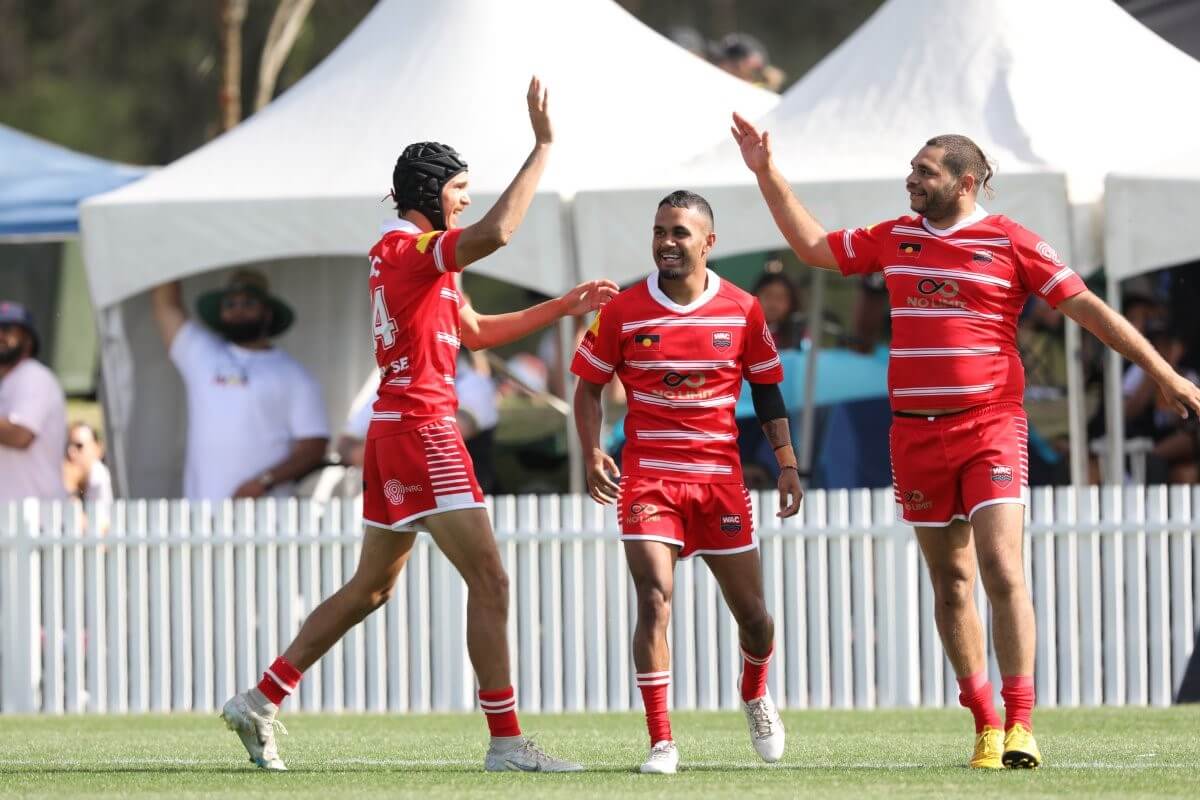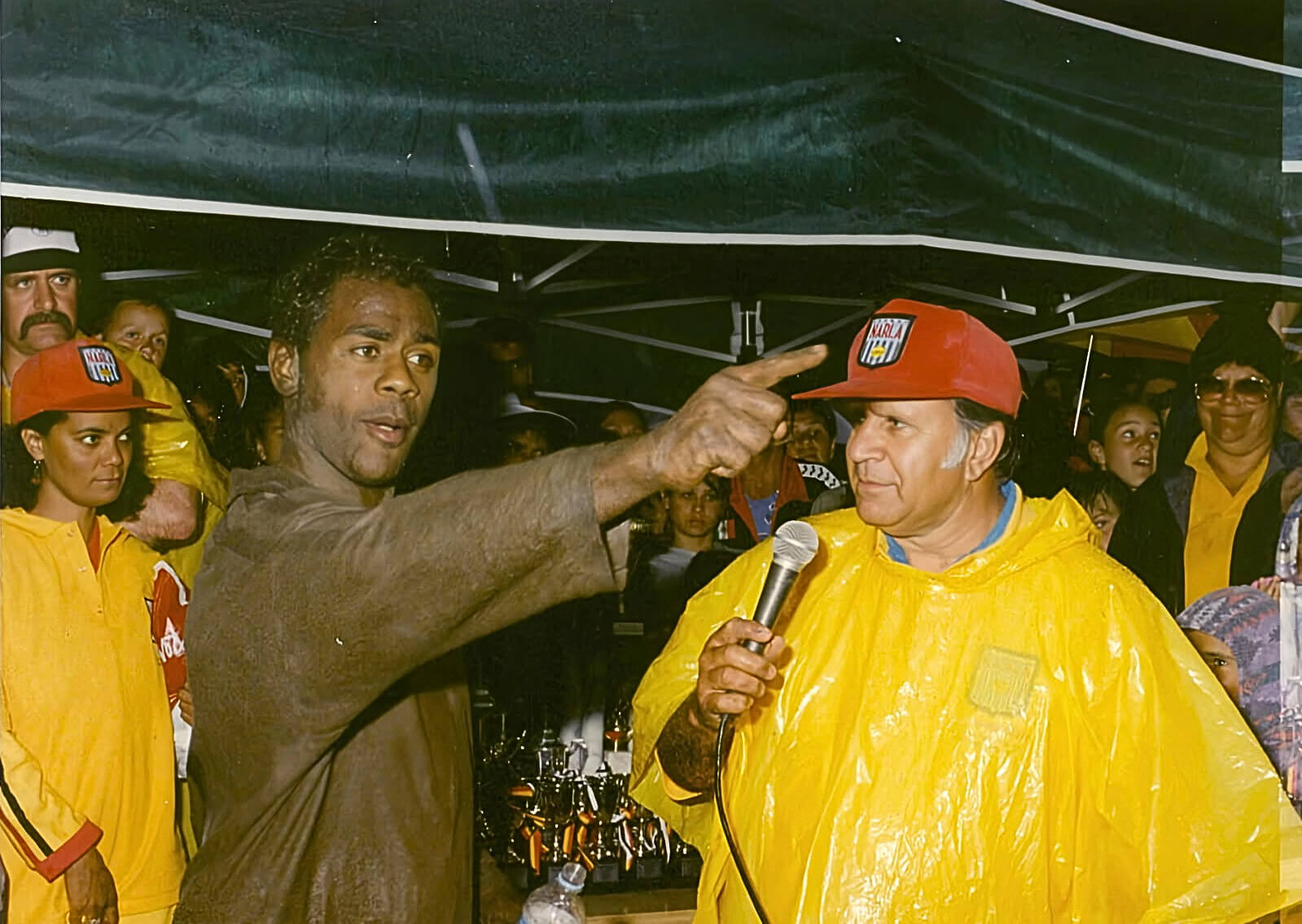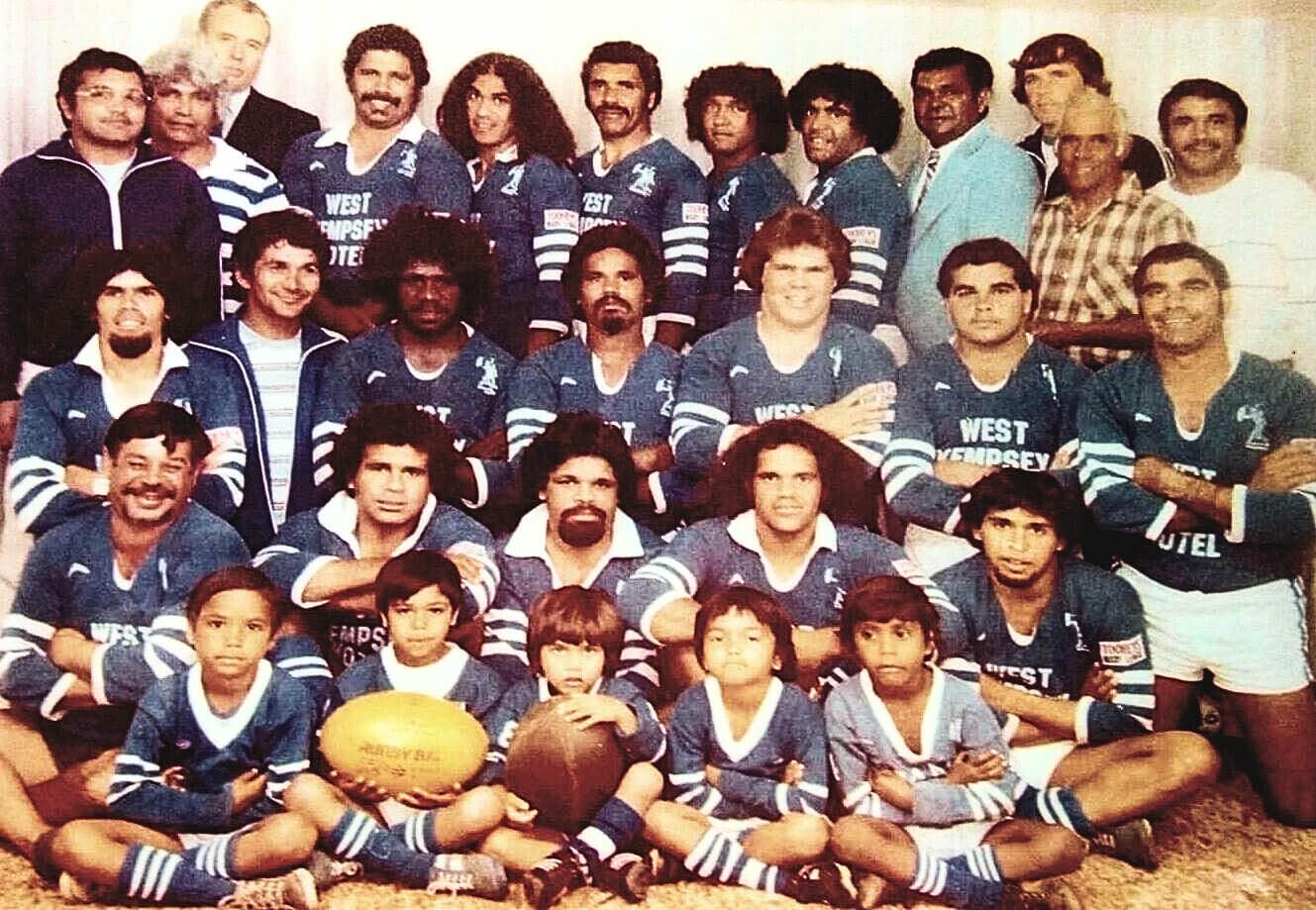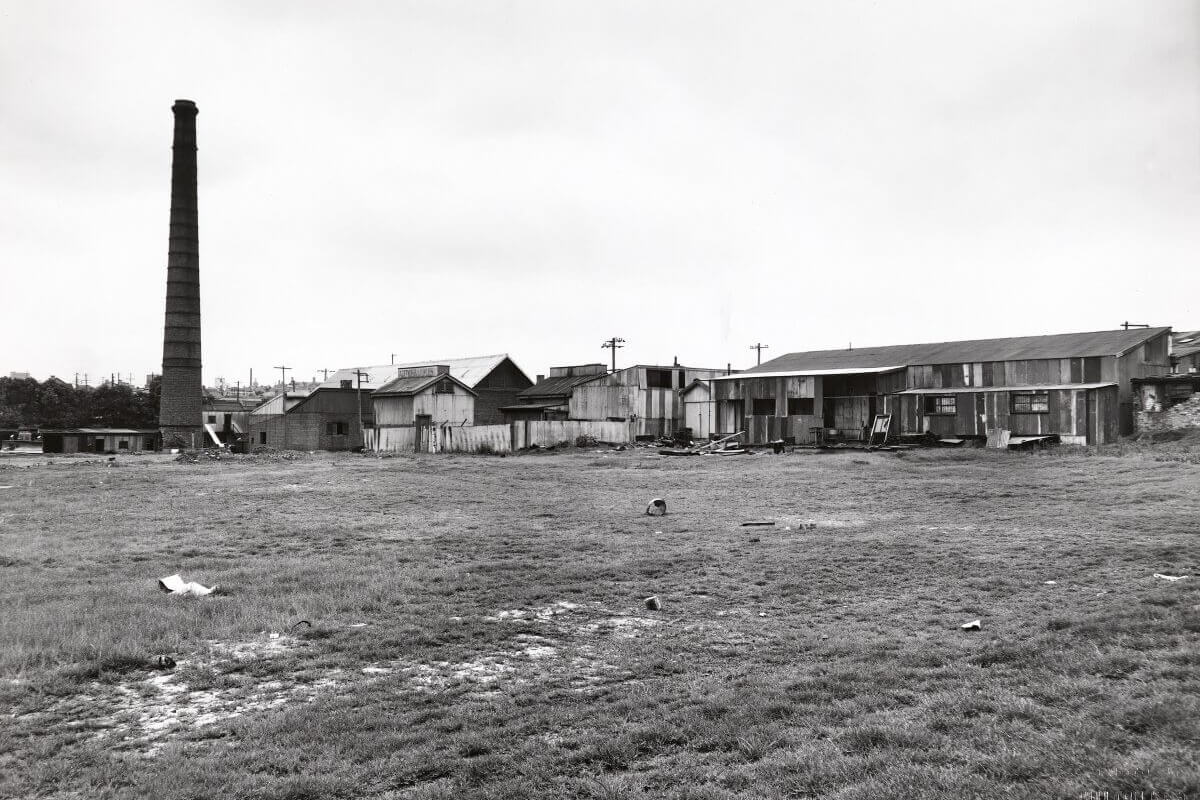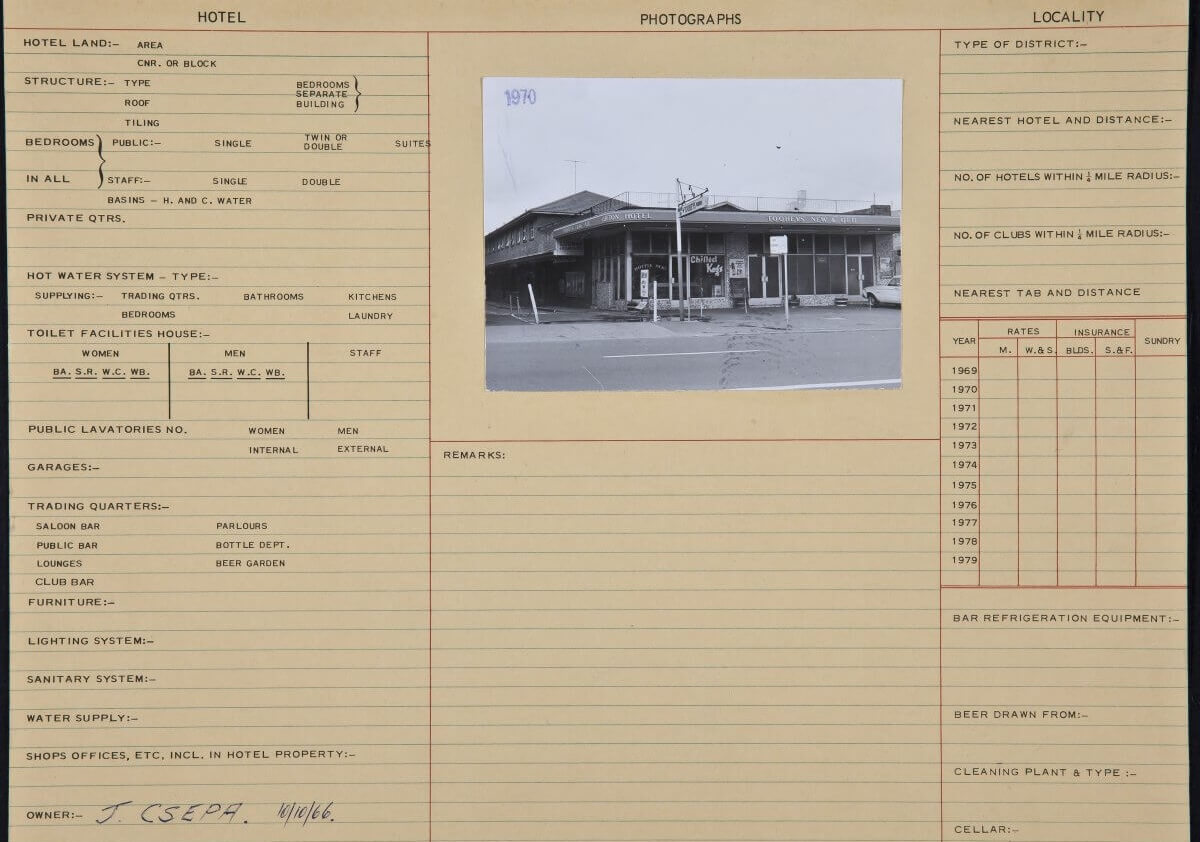Location
Camdenville Park, 63–65 May Street, St Peters NSW 2044
St Peters is on the land of the Gadigal and Wangal people of the Eora nation.
Accessibility
Wheelchair accessible
About Koori Knockout
The NSW Annual Aboriginal Rugby League Knock Out (NSWAARLKO), also known as the Koori Knockout, is a significant event for Aboriginal people. It first took place on the October long weekend in 1971 at Camdenville Oval in St Peters. Seven teams from across the state gathered to unite, celebrate and showcase Aboriginal culture and sporting talent, laying the foundation for what is acknowledged today as the largest annual gathering for Aboriginal people in Australia.
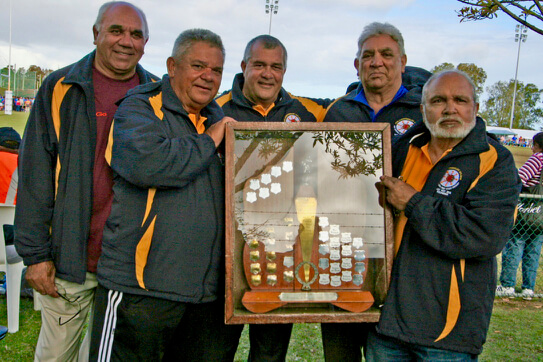
Koori Knockout co-founders (left to right): Bob Morgan, Bill Kennedy, Dan Rose, Vic Wright and Bob Smith holding the original trophy, Woy Woy, New South Wales, 2010
An idea at the Clifton Hotel
Redfern’s Clifton Hotel was a well-known gathering place for Aboriginal people. In the 1960s, 6 young Indigenous men were gathered at the hotel for a meeting of the Koorie United Football Club: Uncle Victor Wright, Bob Smith, Bob Morgan, Bill Kennedy, Danny Rose and the late George Jackson. It was here that the idea of a statewide all-Aboriginal football carnival was conceived.
Uncle Victor recalls the conversation:
We just sat down and had a few little yarns … we wanted something for ourselves, something that was grassroots.
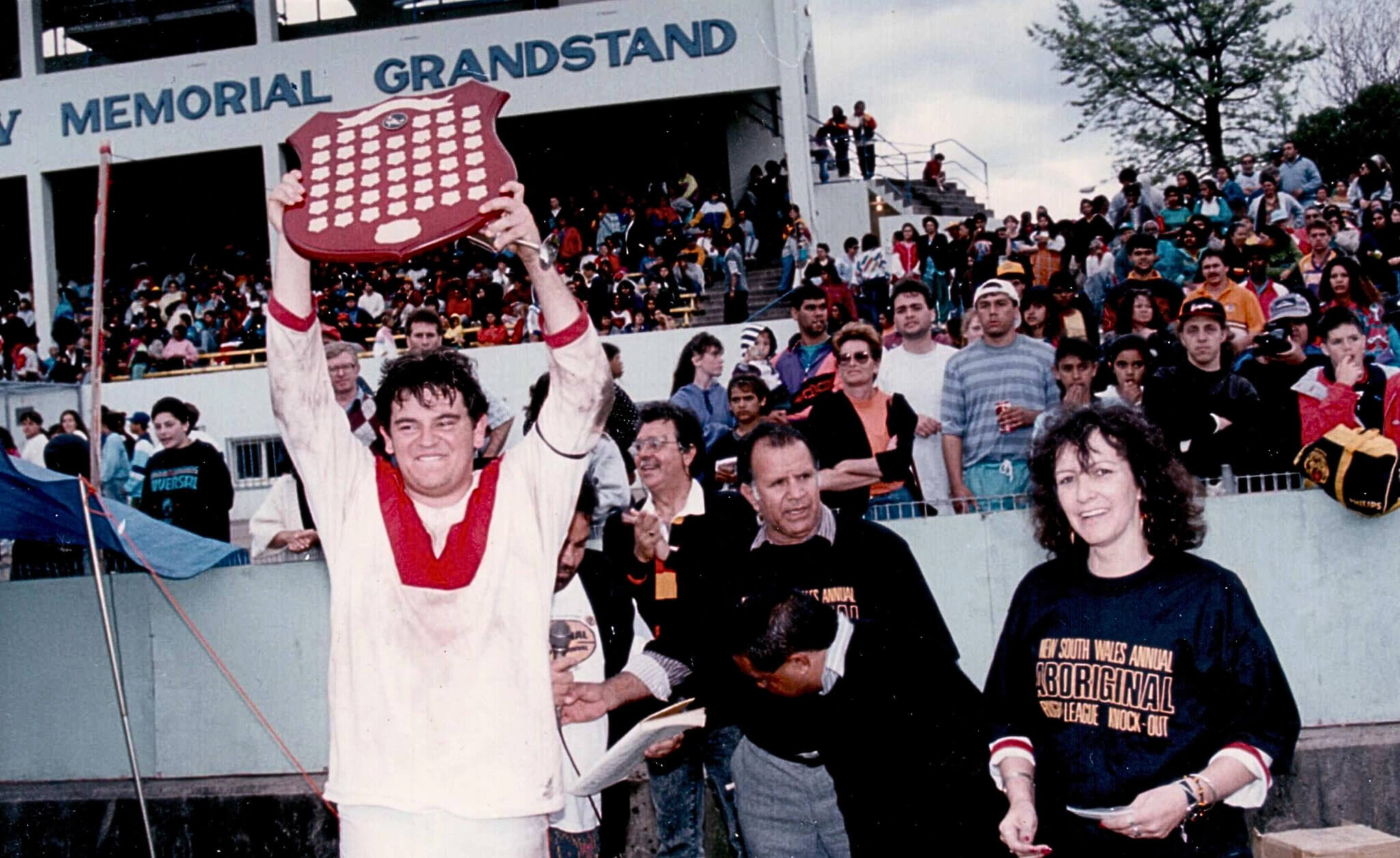
Brad Cooke, winner under-19s exhibition game, Henson Park, Marrickville, New South Wales, 1992
The early years
The first Koori Knockout took place at Camdenville Oval in St Peters in 1971. Over the October long weekend, 7 teams gathered to play football: Koorie United, Redfern All Blacks, Kempsey, La Perouse, Walgett, Moree and a combined Mt Druitt–South Coast side. In those early years, teams were formed along mob-based and kinship connections.
Uncle Bob Morgan remembers:
The Knockout was never simply about football, it was about family, it was about community, it was getting people to come together and enjoy and celebrate things rather than win the competition football.
The Koorie United hosted the carnival until 1974. In 1975, the Knockout was held in Kempsey. A key factor in this decision was to recognise and pay respect to Vic Wright Snr, from Kempsey, a long-time support of Knockout. He had sadly passed away earlier that year. It was then decided that the winner of each Knockout would host the following year.
This shift from Sydney to include other regional locations, whether cities or rural or coastal locations, reflects the strengthened and sustained connection of Aboriginal communities across New South Wales.
Uncle Bob Smith notes:
It is like the lifeblood in their communities … Taking the trophy is the greatest moment of their lives.

Koori United players have their photo taken, 1972
Koori Knockout today
The popularity of the Koori Knockout has increased exponentially since 1971, now attracting over 40,000 spectators each year. It is the largest social and sporting event for Aboriginal people in Australia.
Uncle Bill reflects:
The Knockout is no longer a small football carnival or an Aboriginal community event, it is now a major sporting event on the New South Wales calendar.
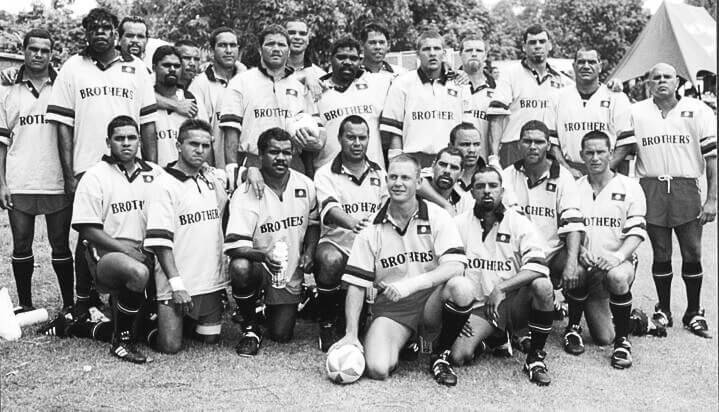
Brothers football players, possibly in 1999
Described as a 'cultural performance and expression', the Knockout could be seen as a modern-day corroboree. It is a relatively new communal practice but echoes the 4-day traditional ceremonial dances and celebrations that have been central to community life for tens of thousands of years.
Uncle Victor states:
It's been a long, hard journey … [but] when you see where it is today, it's still as strong.
Today, the event continues to embody the spirit in which it was formed. It is where Aboriginal communities across the state gather to view healthy competition, showcase Indigenous sporting talent, reconnect with mob, and honour those who have passed away.
References
- Cross J (5 December 2024) Tamworth confirmed hosts for 2025 Koori Knockout, National Indigenous Times website, accessed 11 June 2025.
- Jopson D (2 October 2010) A knockout blow to racial stereotypes, Sydney Morning Herald website, accessed 10 June 2025.
- Morgan B, Wright V and Rose D (2016) Summary report of the NSW Aboriginal Rugby League KO community consultations.
- Muroi M (30 September 2022) How the Koori Knockout became ‘a modern-day corroboree’ over five decades, Sydney Morning Herald website, accessed 10 June 2025.
- Norman H (2006) 'A modern day corroboree: towards a history of the New South Wales Aboriginal Rugby League Knockout', Aboriginal History, 30:169–186, accessed 10 June 2025.
- Norman H (2009) 'An unwanted corroboree: the politics of the New South Wales Aboriginal Rugby League Knockout', Australian Aboriginal Studies, 2:112–122.
- NSW Annual Aboriginal Rugby League Knockout Incorporated (2017) NSW Annual Aboriginal Rugby League Knockout Constitution.
- State Library of NSW (22 August 2022) Koori Knockout: 50 years, State Library of NSW website, accessed 10 June 2025.
- Thorpe N (30 September 2022) Koori Knockout celebrates 50 years as new exhibition looks at the history of the ‘modern day corroboree, ABC News website, accessed 10 June 2025.



